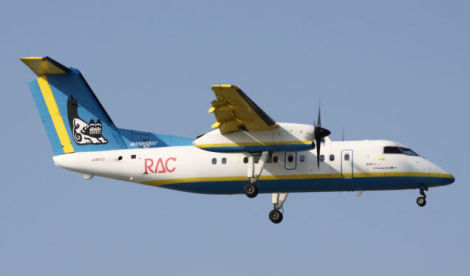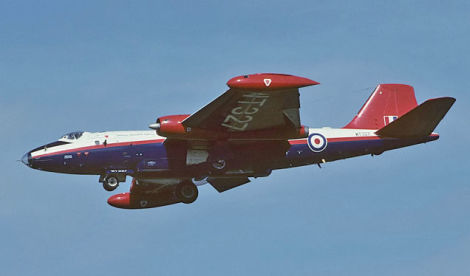Welcome to This Date in Aviation History, getting of you caught up on milestones, important historical events and people in aviation from June 20 through June 23.
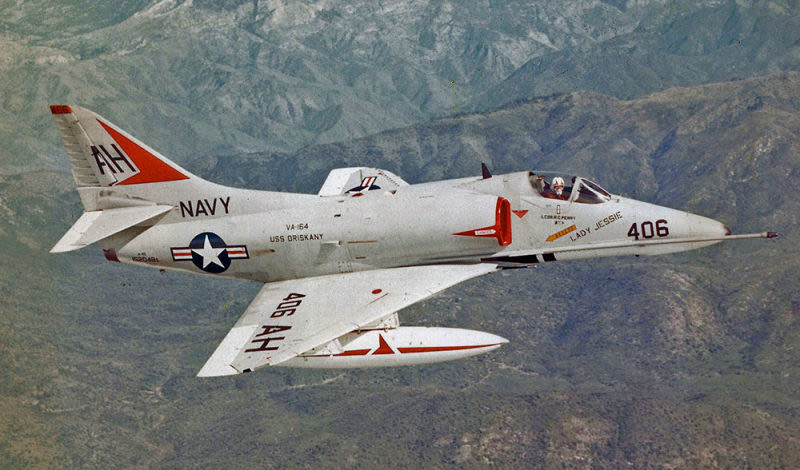
June 22, 1954 – The first flight of the Douglas A-4 Skyhawk. The 1950s was a period of transition for military aviation, as new jet-powered warplanes began to take the place of older, propeller-driven aircraft in increasing numbers. Douglas had provided the US Navy and US Marine Corps with a large number of bombers, fighters, and naval attack aircraft aircraft during WWII, and they followed those up with the remarkable piston-engine attack plane, the AD (A-1) Skyraider, which came too late to take part in the war but served with great distinction in both the Korean and Vietnam Wars. Best known as a hard-hitting and rugged ground attack aircraft, the Skyraider came in a host of variants, including one that was modified to carry nuclear weapons. But despite the ongoing effectiveness of the AD, the Navy requested a jet-powered aircraft to take its place.
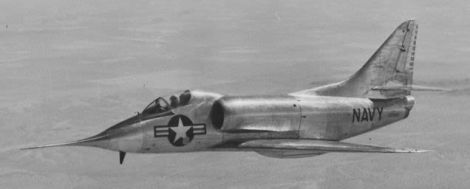
Bucking the trend towards larger and larger aircraft with multiple engines, Douglas engineer Ed Heinemann designed a small, tailed delta wing fighter powered by a single jet engine. In fact, the A4D (later redesignated A-4), was so small that its wings did not need to be folded for carrier storage, and the final aircraft weighed half of what the Navy specified for the new airplane. In fact, the A-4 weighed even less than the Skyraider it replaced. The first A-4s were powered by a Wright J65 turbojet, but starting with the A-4E, Douglas moved to a Pratt & Whitney J52 turbojet that gave the little fighter a top speed of 670 mph. With such a powerful jet engine in its small airframe, the Skyhawk was a favorite among its pilots for its speed and performance, earning it the nicknames Heinemann’s Hot Rod, Bantam Bomber, Mighty Mite, and Scooter.

But even though it was small, the Bantam Bomber packed a heavy punch. In addition to its two 20mm cannons, the A-4 could carry nearly 10,000 pounds of external ordnance, a greater load than a WWII-era Boeing B-17 Flying Fortress bomber. The Skyhawk also pioneered the concept of “buddy refueling,” where one aircraft could refuel another of the same type in flight, removing the need for dedicated tanker aircraft. Following delivery to the Navy and Marine Corps in 1956, the A-4 first saw combat with the Navy during the Vietnam War, launching air raids on North Vietnam in August 1964. Skyhawks also found distinction with the Israeli Air Force in the Yom Kippur War and with the Argentine Air Force during the Falklands War. Other international customers included Kuwait, Australia, New Zealand, Indonesia, Malaysia, and Brazil.
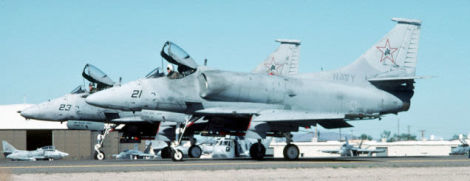
In 1974, the Navy’s Blue Angels demonstration squadron chose the Skyhawk as their new demonstration aircraft when they transitioned from the McDonnell Douglas F-4 Phantom II, a plane that was much larger and more costly to operate. The smaller and lighter aircraft, with a tighter turning radius, allowed for a more dynamic flight demonstration, and the Blues flew the Skyhawk until 1986. After the Skyhawk was retired from US Navy fleet duty, it found a new lease on life as an adversary aircraft at the Navy’s Fighter Weapons School (commonly called Top Gun). The A-4 was chosen as the aggressor aircraft because of its small size, excellent maneuverability, and smokeless trail, similar to a MiG-17, and it served in this role until 1999. The A-4 had a remarkable production run of 25 years, and Douglas turned out nearly 3,000 copies of the diminutive fighter-bomber. The US Navy retired the last of its operational A-4s in 2003, but the Skyhawk served with the Israeli Air Force until 2015, and still remains in service with a handful of export countries.
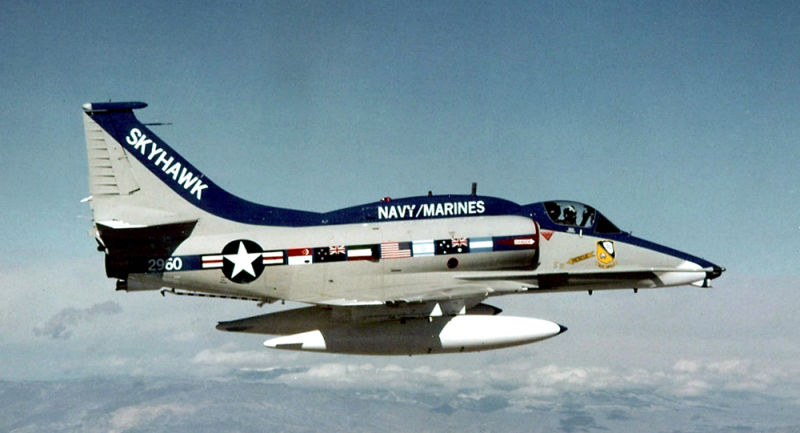

June 23, 1942 – The first flight of the Martin JRM Mars. Today, large airliners operate from airports the world over, but in the earlier days of aviation, particularly the Golden Age of the 1930s, the world’s largest operational aircraft were flying boats that could take off and land from just about any patch of water big enough to accommodate them. With 71-percent of the Earth’s surface covered by water, flying boats became the preferred way to transport passengers and cargo across the oceans or along the continental seacoasts, with the added safety factor of being able to land just about anywhere along their route in case of emergency. By WWII, the large flying boat was being supplanted by larger land-based planes, and the age of the flying boat reached its zenith with the huge Martin JRM Mars, the largest flying boat produced for the Allies during the war.

Based on their PBM Mariner, a large two-engined flying boat patrol bomber that first flew in 1939, the Mars was originally conceived as a long-range ocean patrol bomber. Martin scaled up the Mariner by stretching the fuselage 38 feet and adding 82 feet to its wingspan to measure a full 200 feet across. Where the Mariner had two engines, the Mars boasted four more powerful Wright R-3350 Duplex Cyclone 18-cylinder radial engines that provided a cruising speed of 221 mph and an unrefueled range of nearly 5,000 miles. Though Martin conceived the Mars as a maritime patrol bomber, that mission had become obsolete by the time the aircraft entered service. So the US Navy ordered 20 aircraft to be converted as a strategic transport and cargo aircraft. In that role, the cavernous fuselage could accommodate 133 troops, 84 patients along with 25 medical attendants, or up to 32,000 pounds of cargo.
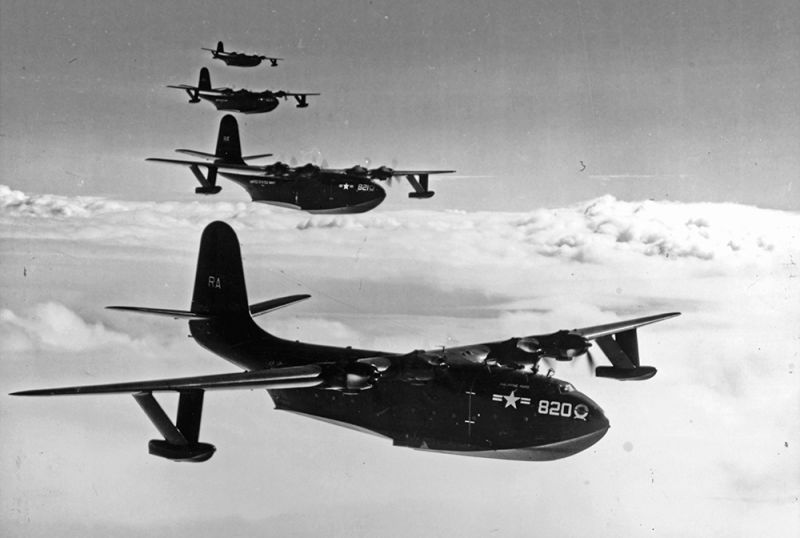
The first of these giant flying boats was delivered in June 1945, but with the end of the war in sight, the Navy cut their original order of 20 aircraft to just the five aircraft that were under construction at the time. In a nod to their intended role in the Pacific Theater, each was named after Pacific Ocean locales from the war: the Marianas Mars, Philippine Mars, Marshall Mars, Caroline Mars, and a second Hawaii Mars. The Navy used the aircraft to fly cargo from the US to Hawaii and other islands in the Pacific, and the Caroline Mars, which had been upgraded with more powerful Pratt & Whitney R-4360 Wasp Major 28-cylinder engines, set a world record for passenger load in 1950 when it carried 269 passengers from San Diego to Alameda. The first pre-production aircraft, named Hawaii Mars, was lost in a crash in the Chesapeake Bay, leaving only the original pre-production aircraft and four others. Engines fires dogged the development of the Mars, and the Marshall Mars was lost in 1950 following an engine fire that destroyed the plane, leaving only four aircraft.
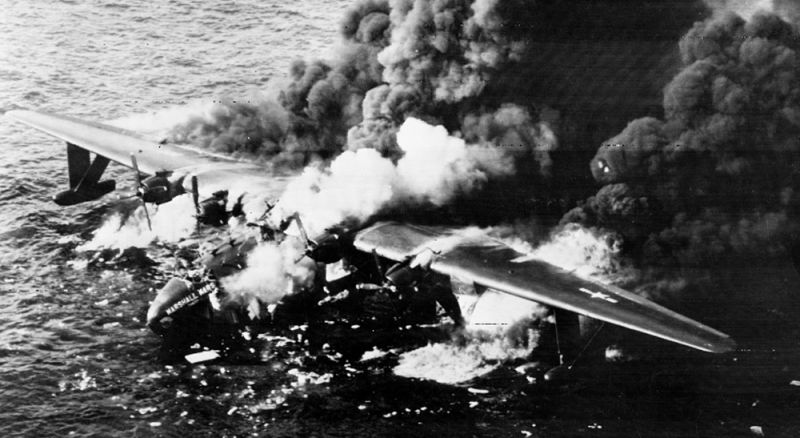
By 1959, the Navy was done with the giant flying boats, and they planned to sell the remaining aircraft for scrap. However, the mammoth planes got a new lease on life when they were purchased by a consortium of Canadian foresters to be converted to firefighting water bombers. Water tanks and pick up scoops were added which allowed 30 tons of water to be taken onboard on just 22 seconds. But fate kept chipping away at the Mars, and the Marianas Mars was lost in a fatal crash in 1961, and the Caroline Mars fell victim to Typhoon Freda in 1962. That left just two aircraft.
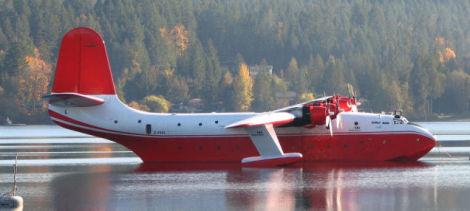
In 2012, the owners of the remaining aircraft, Coulson Flying Tankers, restored the Philippine Mars to US Navy livery with the intent of flying it to the National Naval Aviation Museum in Florida where it would be put on display. However, the Canadian government stepped in to keep the aircraft in Canada, and the political fight over its final disposal continues. The Hawaii Mars remains flying, though it is no longer under contract for firefighting duties, and was damaged during an air show appearance in 2016.
Short Takeoff
June 20, 1983 – The first flight of the Bombardier Dash 8, the first in a series of twin-turboprop, medium-range airliners that were originally known as the de Havilland Canada (DHC) Dash 8. Developed from the four-engine DHC Dash 7, the Dash 8 is built in four variants capable of accommodating from 39-78 passengers. It entered service in 1984 with the now-defunt NorOntair airline, and was extremely successful as a regional airliner. Despite challenges from newer small regional jets, the lower operating costs of the turboprop engine on shorter flights at lower altitudes have allowed the Dash 8 to remain competitive. The Dash 8 remains in production, and nearly 1,200 have been built to date.
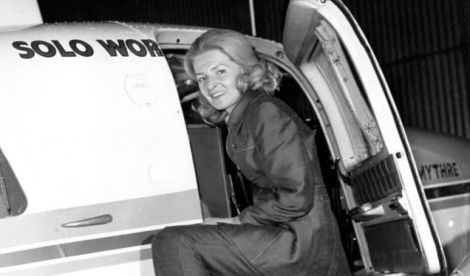
June 20, 1966 – Sheila Scott completes the first of three circumnavigations of the globe. Born on April 27, 1922 in Worcester, England, Scott was a record-setting aviatrix and made her first round-the-world flight in a Piper Comanche 260B. Departing from London Heathrow on May 18, she flew approximately 31,000 miles over the course of 34 days and 189 flying hours. Scott topped that in 1971 with a “world and a half” flight of 34,000 miles, becoming the first person to fly over the North Pole in a single-engine aircraft. She was awarded the Order of the British Empire in 1968 for her exploits, and died in 1988 at the age of 66.
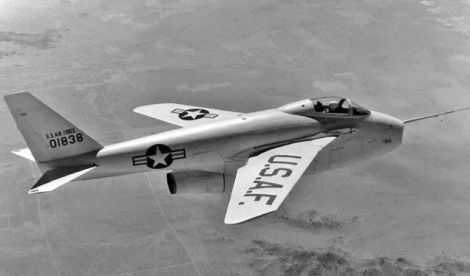
June 20, 1951 – The first flight of the Bell X-5, an aircraft that was inspired by the variable-sweep wing Messerschmitt P.1101 and the first aircraft that was capable of changing the angle of wing sweep in flight (the wing sweep of the P.1101 could only be changed on the ground). The X-5 had three settings for the wings, and a full sweep could be accomplished in 30 seconds. However, the aircraft was so unstable that the second prototype was lost in a crash which killed its test pilot. While the X-5 was ultimately a failure, data on swing-wing technology would be used successfully on later production aircraft such as the General Dynamics F-111 Aardvark, the Grumman F-14 Tomcat and the Rockwell B-1 Lancer bomber.
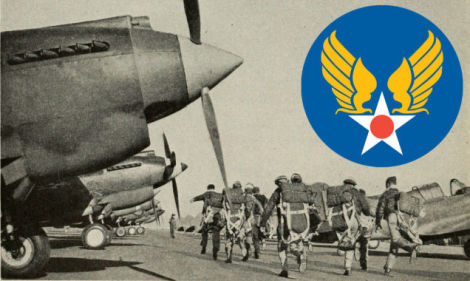
June 20, 1941 – The United States Army Air Forces is created. The US Army Air Forces (USAAF) was the successor to the US Army Air Corps (USAAC, 1926-1941) and the US Army Air Service (USAAS, 1918-1926). The USAAF formed one of three distinct components of the US Army, the others being the Army Ground Forces and the Army Service Forces. The USAAF combined disparate aviation organizations under a single command, which reported to the Army Chief of Staff. The USAAF witnessed extraordinary growth during the Second World War, and boasted 2.4 million personnel and more than 80,000 aircraft by 1945. Drastic cuts in personnel and materiel following the war saw the USAAF dwindle to just 304,000 airmen and less than 30,000 planes. Based on the recommendation of President Harry Truman, Congress passed the National Security Act of 1947 which created the Department of the Air Force, and the USAAF became the United States Air Force on September 18, 1947.
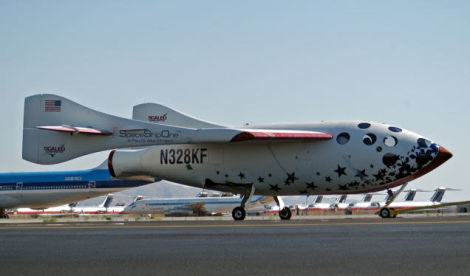
June 21, 2004 – SpaceShipOne makes the first privately-funded manned spaceflight. SpaceShipOne is an experimental air-launched, rocket-powered spacecraft that is capable of suborbital flight. Designed by Burt Rutan and built by his company Scaled Composites, SpaceShipOne was the first step in a program to take paying passengers into space, and served as proof-of-concept for the larger SpaceShipTwo which first flew in 2010. SpaceShipOne is dropped from the Scaled Composites White Knight mothership before an onboard rocket takes in into space, and it uses a unique feathering system that raises the aircraft’s tail boom to slow the ship during reentry. With the successful flight, the design team won the $10 million Ansari X Prize by reaching an altitude of 100 km twice within a two-week period. SpaceShipOne made 17 test flights, three of which went beyond 100 km in altitude, and the hybrid aircraft/spacecraft is now preserved at the National Air and Space Museum in Washington, DC.

June 21, 1961 – The first flight of the Aviation Traders Carvair, an aircraft developed from the Douglas DC-4 by entrepreneur Freddie Laker to allow travelers to take their cars with them on holiday. The DC-4 was modified by placing the flight deck in a raised section above the main fuselage to provide room for five cars and 22 passengers, or three cars and 50 passengers. The flexible design of the Carvair meant that the configuration could be changed on the ground between flights in as little as 40 minutes. A total of 21 DC-4s were converted and flown by various airlines in Europe, and one remains in service, based in Denton, Texas, which set a world record in 2005 when it carried 80 skydivers aloft.
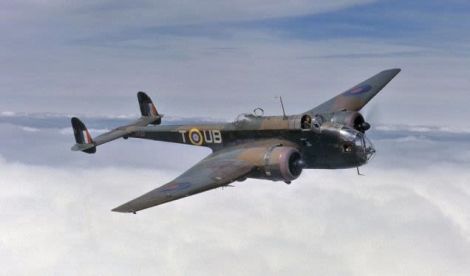
June 21, 1936 – The first flight of the Handley Page Hampden, a twin-engine medium bomber flown by the Royal Air Force in the early part of WWII. The Hampden entered service with two other early bombers, the Armstrong Whitworth Whitley and Vickers Wellington, though it was the first of the trio to be retired. The Hampden was known as the “flying suitcase” by its crews due to its cramped fuselage, and it carried out the majority of the bombing missions early in the war, and also took part in the so-called “1000 Bomber Raids” against Germany. Though considered modern when it was first built, the Hampden was quickly outclassed by newer designs, and was briefly relegated to night fighter duties before being retired in 1943. A total of 1,430 were produced from 1936-1941.
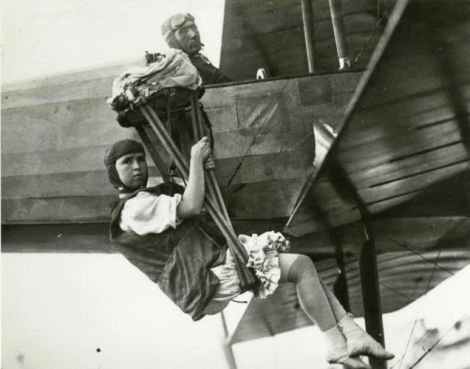
June 21, 1913 – Georgia “Tiny” Broadwick becomes the first woman to parachute from an airplane. Tiny Broadwick (neé Thompson), so named because of her small stature and 85-pound weight, was the adopted daughter of pioneering parachutist and showman Charles Broadwick. Tiny joined Broadwick’s troupe of aerial performers at the age of 15, and was billed as the “Doll Girl.” She began her career by parachuting from balloons before making her first jump from an airplane piloted by Glenn L. Martin. Though June 21 is recognized as the date of her first jump, she had made two prior jumps during a flight exhibition in Chicago the previous year. While demonstrating a static line jump for the US Army, Broadwick’s line got tangled in the aircraft and she had to cut herself free. Later jumps were made without a static line, making her the first person to perform a free-fall parachute jump. Broadwick retired in 1922 after making 1,100 jumps, and died in 1978.
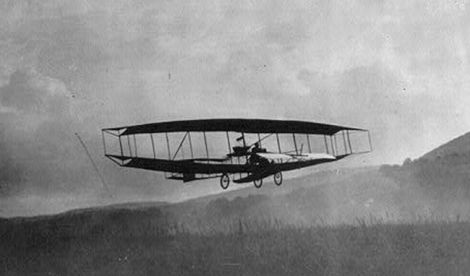
June 21, 1906 – The first flight of the AEA June Bug. The Aerial Experiment Association (AEA) was founded by Scottish inventor Alexander Graham Bell to further the study of aeronautics and aircraft design. One of its members, American Glenn Curtiss, became a principal rival of the Wright brothers and the man credited with creating aircraft production in America. The June Bug was an aircraft of Curtiss’ own design and, with most of the Wright’s work being carried out in secret, it made the first public flight in the United States with Curtiss at the controls. (One significant difference between the June Bug and the Wright Flyer was that Curtiss’ design took off under its own power, while the Flyer relied on a catapult.) On July 4, 1908, Curtiss won the Scientific American Trophy and its $2,500 prize by completing a flight of 5,080 feet in distance, cementing Curtiss’ place in the pantheon of American aviation pioneers.
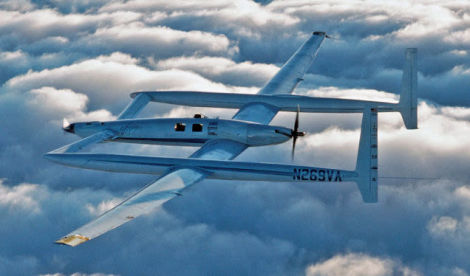
June 22, 1984 – The first flight of the Rutan Voyager, the first aircraft capable of flying around the world without refueling. The idea to build the world-spanning aircraft was initiated by pilots Jeana Yeager and Dick Rutan, along with famed aeronautical engineer Burt Rutan, and the aircraft was built by Burt Rutan’s company Scaled Composites. The Voyager airframe was constructed from fiberglass, carbon fiber and Kevlar, weighed just 939 pounds empty (engines and fuel brought the weight to 9,700 pounds), and was powered by a pair of Lycoming engines in a push-pull configuration. Yeager and Dick Rutan departed from Edwards Air Force Base in California on December 14, 1986 and completed the circumnavigation on December 23 after flying 26,366 miles and setting a flight endurance record of just over nine days. The Voyager is now on display at the Smithsonian Air and Space Museum in Washington, DC.

June 22, 1947 – The first flight of the Martin XB-48, a six-engined, straight-winged bomber that was developed alongside the swept-wing Boeing B-47 Stratojet as a fallback should the Boeing bomber prove unsuccessful. Displaying its design lineage with the piston-powered Martin B-26 Marauder, the XB-48 was the first jet bomber to employ a bicycle undercarriage with outriggers on the wings, an arrangement that had been tested on a modified B-26. Along with the B-47, the XB-48 competed with the North American XB-45 Tornado and the Convair XB-46, with only the Tornado selected for limited production. Only two XB-48s were built before the program was canceled in 1948.
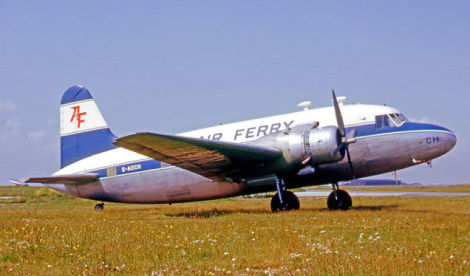
June 22, 1945 – The first flight of the Vickers VC.1 Viking, a twin-engine airliner developed from the Vickers Wellington bomber. Following WWII, Britain worked to create a civilian airline service after focusing almost solely on military aircraft production during the war. The Viking used the wing and undercarriage of the Wellington, but the fuselage was entirely new and designed to carry 21 passengers. The airliner was introduced in 1946, and British European Airways (BEA) operated the Viking for eight years before it was replaced by more modern pressurized airliners. One Viking was modified by the addition of two Rolls-Royce Nene turbojets and became the world’s first purely jet-powered airliner when it flew in 1948. A total of 163 Vikings were built.
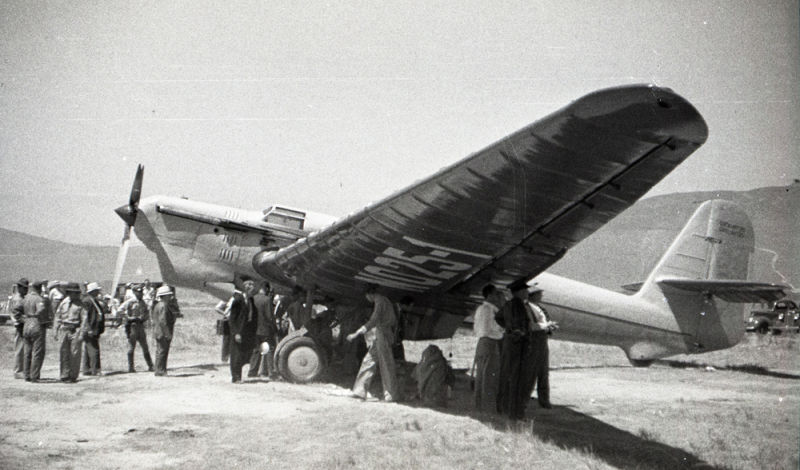
June 22, 1933 – The first flight of the Tupolev ANT-25, a long-range aircraft developed by Pavel Sukhoi, under the supervision of Andrei Tupolev, and built by the Central Aerohydrodynamic Institute (TsAGI). The ANT-25 was powered by a single Mikulin M-34 12-cylinder engine, and the aircraft featured a very long wing for efficient fight. The large wing also housed enormous fuel tanks which held more than 13,000 pounds of fuel. The ANT-25 made numerous record-breaking flights, including a non-stop flight from Moscow across the North Pole to the United States. The planned destination was San Francisco, but a fuel shortage required the crew to land in Vancouver. Nevertheless, the 63-hour flight covered a total of 5,670 miles. A subsequent flight covered a distance of 7,100 miles from Moscow to San Jacinto, California. Plans to convert the aircraft into a bomber did not materialize. Three variants were produced, and a replica is on display at the Monino aviation museum.
June 23, 2006 – The RAF retires the English Electric Canberra. Originally conceived as a jet-powered successor to the de Havilland Mosquito, the Canberra was one of the most successful of the early jet-powered bombers of the 1950s. It was capable of flying higher than most fighters when it was introduced, and was an important part of England’s early nuclear strike force. The Canberra proved to be remarkably adaptable to different missions, and its retirement marked the end of more than 50 years of RAF service. The Canberra was also built under license in the US as the Martin B-57 Canberra, and it became the first American jet-powered bomber to drop bombs in battle during the Korean War. Three of the Martin-built aircraft remain in service with NASA, where they are used to carry out high-altitude research.
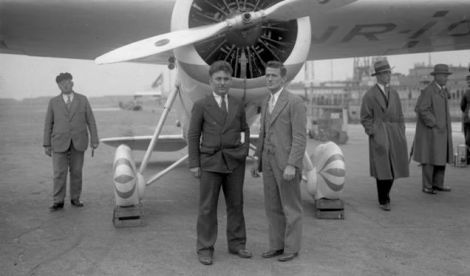
June 23, 1931 – Wiley Post and Harold Gatty take off on a flight around the world. While others had flown fixed wing aircraft around the world before, the record for the shortest circumnavigation was held by the airship Graf Zeppelin, which completed the journey in 21 days in 1929. Post and Gatty, who acted as navigator, departed from Roosevelt Field on Long Island flying a Lockheed Vega named Winnie Mae and headed eastward. They completed the flight on July 1 after traveling 15,474 miles in a record time of 8-and-a-half days. They were hailed as heroes in the US, and received a ticker tape parade in New York City. Post wrote a chronicle of their journey titled Around the World in Eight Days.
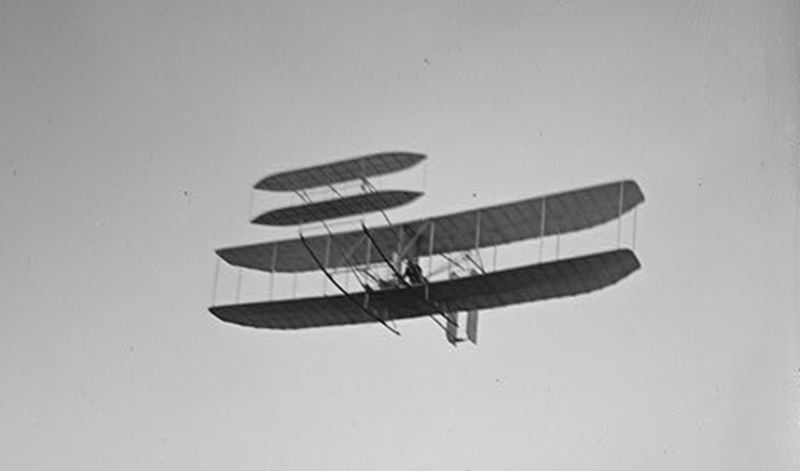
June 23, 1905 – The first flight of the Wright Flyer III. Following the historic first powered flight on December 17, 1903 with the original Wright Flyer, the Wright Brothers worked to refine their flying machine and improve on its reliability, handling, and performance. They followed the first Flyer with the Wright Flyer II, which introduced a more powerful engine but less efficient wing, then developed the Wright Flyer III, which featured enlarged control surfaces, and refined controls. Upright seating for a pilot and passenger were added in 1908. With the Flyer III, the brothers began to make ever longer flights, including one flight which circled the Huffman Prairie outside Dayton, Ohio for nearly 40 minutes and covered a distance of 24 miles.
Connecting Flights
If you enjoy these Aviation History posts, please let me know in the comments. You can find more posts about aviation history, aviators, and aviation oddities at Wingspan.
